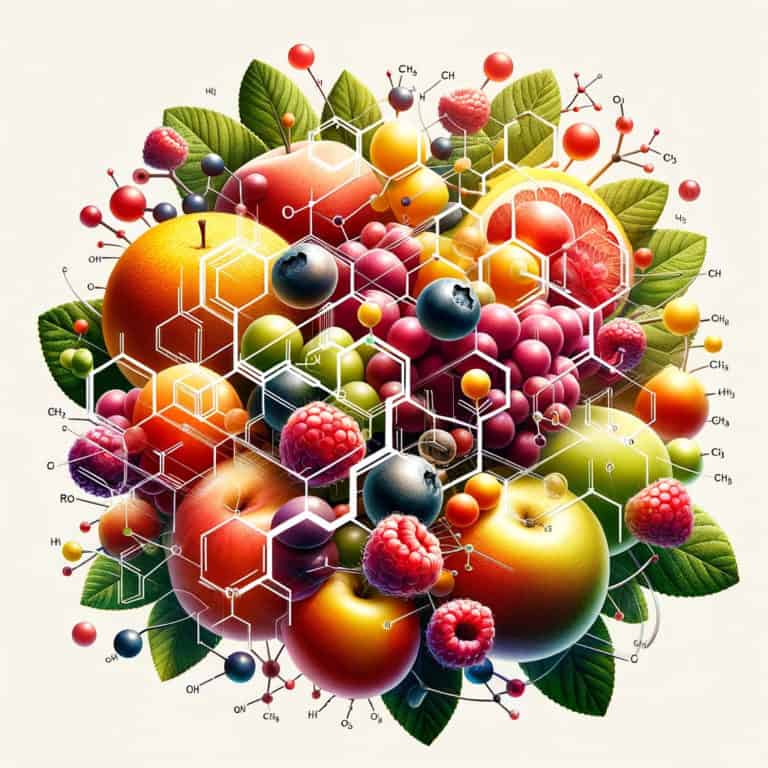Beyond Flavor: Maillard Reaction’s Broad Implications
This review delves into the Maillard reaction, highlighting its complicated mechanics, numerous applications in food and pharmaceuticals, and health consequences, shining light on its importance beyond culinary flavor improvement.

Introduction to the Maillard Reaction
The Maillard reaction is a fundamental chemical reaction that occurs when amino acids and reducing sugars are heated, and it is important in food science for flavor and color development. In food processing and storage, nonenzymatic browning occurs through complicated interactions between reducing sugars and amine groups (Vallejo-Córdoba & González-Córdova, 2007). Nonenzymatic interactions between reducing chemicals and amines, amino acids, peptides, or proteins provide tastes and colors in meals (Vallejo-Córdoba & González-Córdova, 2007). The Maillard reaction has been linked to the development of diabetes problems as well as a variety of disorders, including cardiovascular, renal, and neurological diseases (Zhang et al. 2008).
The Maillard reaction is controlled by a number of parameters, including pH, temperature, water activity, the type of reducing sugar, and the presence of metals. It has been shown to cause nutrient loss, reduced digestibility, and the formation of hazardous chemicals, all of which have an impact on the quality and safety of food products. In dairy products, the Maillard reaction not only helps to flavor formation but also provides a rich source of flavor components (Newton et al., 2012). Furthermore, the Maillard reaction is a significant flavor-producing response in cooked meat, emphasizing its culinary value (Schwartz et al., 2022).
Furthermore, the Maillard reaction is not only used to generate flavors; it also helps to modify and improve protein functionality through carbohydrate conjugation (Dumitrașcu, 2023). This conjugation, which occurs in the early phases of the Maillard reaction, has received attention for improving the biological activity and functional features of proteins derived from numerous sources (Dumitrașcu, 2023). Furthermore, the Maillard reaction has been connected to the generation of mutagens in dairy products, stressing the need of understanding and managing this reaction during food processing (Schwambach and Peterson, 2005).
The Maillard reaction is a complicated but necessary process in food science that contributes considerably to the formation of flavors and colors in diverse food products. Understanding the elements that influence this reaction, as well as the implications for food quality and safety, is critical for the food industry’s ability to provide appealing and safe goods.
Mechanisms of the Maillard Reaction
The Maillard reaction is a complicated set of nonenzymatic reactions that occur between reducing chemicals and amines, amino acids, peptides, or proteins, with numerous important steps (Henning and Glomb, 2016). The initial stage includes the condensation of a reducing sugar’s carbonyl group with an amino molecule, which results in the creation of a Schiff base (Mottram, 1993). This condensation phase is critical because it lays the groundwork for later reactions in the Maillard pathway. Following the first condensation, the reaction enters an intermediate stage known as the Amadori rearrangement (Yu et al., 2019). During this stage, the Schiff base dehydrates, forming an Amadori molecule (Yu et al., 2019). The Amadori rearrangement is an important phase in the Maillard reaction, impacting the formation of many flavor and color components in food products.
The Maillard reaction advances to the ultimate stage, where melanoidins are produced (Charnock et al., 2022). Melanoidins are high molecular weight, brown-colored molecules that contribute to the distinct flavor and color of foods that undergo the Maillard reaction (Charnock et al., 2022). Melanoidin production is the most advanced stage of the Maillard reaction, indicating the end of a sequence of complex chemical reactions. Melanoidin production pathways are complex and can change depending on reaction circumstances, substrates, and the presence of additional chemicals (Charnock et al., 2022).
Furthermore, the Maillard reaction is not a linear process, but rather a network of interconnected pathways that can produce a wide range of molecules with different chemical structures and properties (Villaverde and Estévez, 2013). The presence of numerous intermediates, side reactions, and competing routes that might influence the final composition of Maillard products adds to their complexity and diversity (Villaverde & Estévez, 2013). Understanding the numerous steps and pathways of the Maillard reaction is critical for determining the synthesis of flavor and color compounds in food systems, as well as manipulating the process to obtain desired sensory qualities in food products.
The Maillard reaction goes through several steps, including initial condensation, Amadori rearrangement, and the synthesis of melanoidins, demonstrating the complexity and diversity of reaction pathways involved in this fundamental chemical process. The interplay of these steps, as well as the extensive network of routes, emphasizes the necessity of researching and understanding the Maillard reaction for food scientists and researchers in a variety of sectors.
Applications and Implications of the Maillard Reaction
The Maillard reaction, a complex nonenzymatic reaction involving reducing and amino chemicals, is important in many industries, including culinary, medicinal, and cosmetics. In the culinary world, the Maillard reaction is critical for flavor development, color enhancement, and the creation of attractive odors in cooked meals. Melanoidins, for example, are Maillard reaction products that work as emulsifiers and encapsulating agents in the food-processing sector, helping to generate novel functions in food items (Lee et al., 2016). Furthermore, the Maillard reaction is used to encapsulate fish oil powders, demonstrating its use in the food business (Augustin et al., 2006).
The Maillard reaction is important in the pharmaceutical and cosmetic industries because it allows for the synthesis of protein-polysaccharide conjugates, which have a wide range of applications in drug delivery systems, tissue engineering, wound repair, and cosmetic formulations. For example, in the cosmetics industry, Maillard reaction products are utilized as emulsifiers and encapsulating matrices, indicating their utility in increasing product stability and functionality (Lee et al., 2016). Furthermore, Maillard reaction products have been investigated for antibacterial and antioxidant characteristics, making them suitable preservation agents in cosmetic and pharmaceutical formulations (Anh et al., 2020).
Furthermore, the Maillard reaction affects health and nutrition. While the Maillard reaction helps to generate pleasant flavors and colors in foods, it also causes the generation of potentially hazardous substances including acrylamide, a recognized carcinogen (Liu et al., 2019). Acrylamide, which is produced during high-temperature cooking operations, causes health hazards and has been linked to oxidative stress and DNA damage (Ghorbel et al., 2015). On the other hand, Maillard reaction products such as maltol have antioxidant characteristics and can be used to reduce oxidative damage, indicating possible health advantages (Han et al. 2015).
Finally, the Maillard reaction has a wide range of uses, from improving flavors in culinary creations to producing breakthrough pharmaceutical and cosmetic formulations. While the Maillard reaction has several advantages, including flavor enhancement and product stability, it is important to recognize its potential health consequences, particularly the creation of hazardous chemicals such as acrylamide. Understanding the varied role of the Maillard reaction is critical for maximizing its benefits while minimizing related dangers in a variety of industrial and health contexts.
Reference
Anh, Q., Van, P., Do, D., Quoc, H., & Dai, N. (2020). Maillard reaction products of chitosan and glucosamine: antibacterial and antioxidant activity. Nuclear Science and Technology, 10(1), 47-55. https://doi.org/10.53747/jnst.v10i1.31
Augustin, M., Sanguansri, L., & Bode, O. (2006). Maillard reaction products as encapsulants for fish oil powders. Journal of Food Science, 71(2). https://doi.org/10.1111/j.1365-2621.2006.tb08893.x
Charnock, H., Pickering, G., & Kemp, B. (2022). The maillard reaction in traditional method sparkling wine. Frontiers in Microbiology, 13. https://doi.org/10.3389/fmicb.2022.979866
Dumitrașcu, L. (2023). Alternative processing options for improving the proteins functionality by maillard conjugation. Foods, 12(19), 3588. https://doi.org/10.3390/foods12193588
Ghorbel, I., Khemakhem, M., Boudawara, O., Marrekchi, R., Jamoussi, K., Amar, R., … & Kamoun, N. (2015). Effects of dietary extra virgin olive oil and its fractions on antioxidant status and dna damage in the heart of rats co-exposed to aluminum and acrylamide. Food & Function, 6(9), 3098-3108. https://doi.org/10.1039/c5fo00342c
González, A., Martínez, M., Paredes, A., León, A., & Ribotta, P. (2016). Study of the preparation process and variation of wall components in chia (salvia hispanica l.) oil microencapsulation. Powder Technology, 301, 868-875. https://doi.org/10.1016/j.powtec.2016.07.026
Han, Y., Xu, Q., Hu, J., Han, X., Li, W., & Zhao, L. (2015). Maltol, a food flavoring agent, attenuates acute alcohol-induced oxidative damage in mice. Nutrients, 7(1), 682-696. https://doi.org/10.3390/nu7010682
Henning, C. and Glomb, M. (2016). Pathways of the maillard reaction under physiological conditions. Glycoconjugate Journal, 33(4), 499-512. https://doi.org/10.1007/s10719-016-9694-y
Lee, Y., Tang, T., Phuah, E., Alitheen, N., & Tan, C. (2016). New functionalities of maillard reaction products as emulsifiers and encapsulating agents, and the processing parameters: a brief review. Journal of the Science of Food and Agriculture, 97(5), 1379-1385. https://doi.org/10.1002/jsfa.8124
Liu, H., Wang, X., Yang, S., Wang, R., & Wang, T. (2019). Saturation mutagenesis and self‐inducible expression of trehalose synthase in bacillus subtilis. Biotechnology Progress, 35(4). https://doi.org/10.1002/btpr.2826
Mazumder, M., Hongsprabhas, P., & Vasudevan, R. (2019). In vitro and in vivo inhibition of maillard reaction products using amino acids, modified proteins, vitamins, and genistein: a review. Journal of Food Biochemistry, 43(12). https://doi.org/10.1111/jfbc.13089
Mottram, D. (1993). Flavor compounds formed during the maillard reaction., 104-126. https://doi.org/10.1021/bk-1994-0543.ch010
Newton, A., Fairbanks, A., Golding, M., Andrewes, P., & Gerrard, J. (2012). The role of the maillard reaction in the formation of flavour compounds in dairy products – not only a deleterious reaction but also a rich source of flavour compounds. Food & Function, 3(12), 1231. https://doi.org/10.1039/c2fo30089c
Nunes, L., Martins, E., Perrone, Í., & Carvalho, A. (2019). The maillard reaction in powdered infant formula. Journal of Food and Nutrition Research, 7(1), 33-40. https://doi.org/10.12691/jfnr-7-1-5
Schwambach, S. and Peterson, D. (2005). Reduction of stale flavor development in low-heat skim milk powder via epicatechin addition. Journal of Agricultural and Food Chemistry, 54(2), 502-508. https://doi.org/10.1021/jf0519764
Schwartz, M., Marais, J., Strydom, P., & Hoffman, L. (2022). Effects of increasing internal end‐point temperatures on physicochemical and sensory properties of meat: a review. Comprehensive Reviews in Food Science and Food Safety, 21(3), 2843-2872. https://doi.org/10.1111/1541-4337.12948
Vallejo-Córdoba, B. and González‐Córdova, A. (2007). Ce: a useful analytical tool for the characterization of maillard reaction products in foods. Electrophoresis, 28(22), 4063-4071. https://doi.org/10.1002/elps.200700314
Villaverde, A. and Estévez, M. (2013). Carbonylation of myofibrillar proteins through the maillard pathway: effect of reducing sugars and reaction temperature. Journal of Agricultural and Food Chemistry, 61(12), 3140-3147. https://doi.org/10.1021/jf305451p
Yu, J., Cui, H., Hayat, K., Hussain, S., Jia, C., Zhang, S., … & Ho, C. (2019). Effective mechanism of (−)-epigallocatechin gallate indicating the critical formation conditions of amadori compound during an aqueous maillard reaction. Journal of Agricultural and Food Chemistry, 67(12), 3412-3422. https://doi.org/10.1021/acs.jafc.9b00034
Zhang, Q., Ames, J., Smith, R., Baynes, J., & Metz, T. (2008). A perspective on the maillard reaction and the analysis of protein glycation by mass spectrometry: probing the pathogenesis of chronic disease. Journal of Proteome Research, 8(2), 754-769. https://doi.org/10.1021/pr800858h



